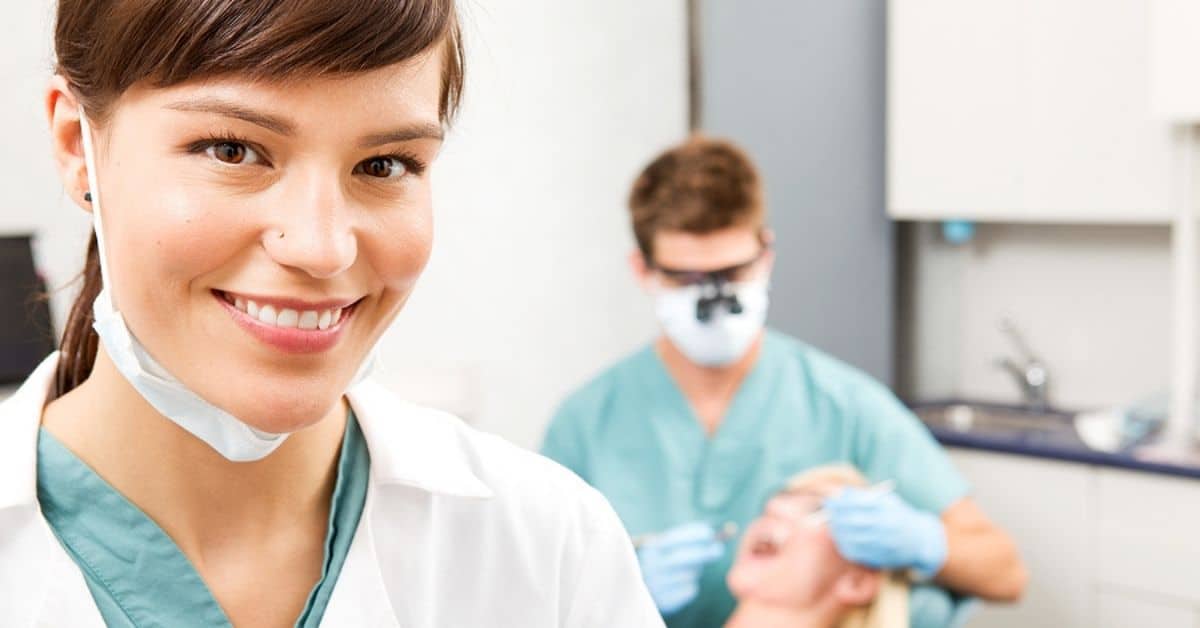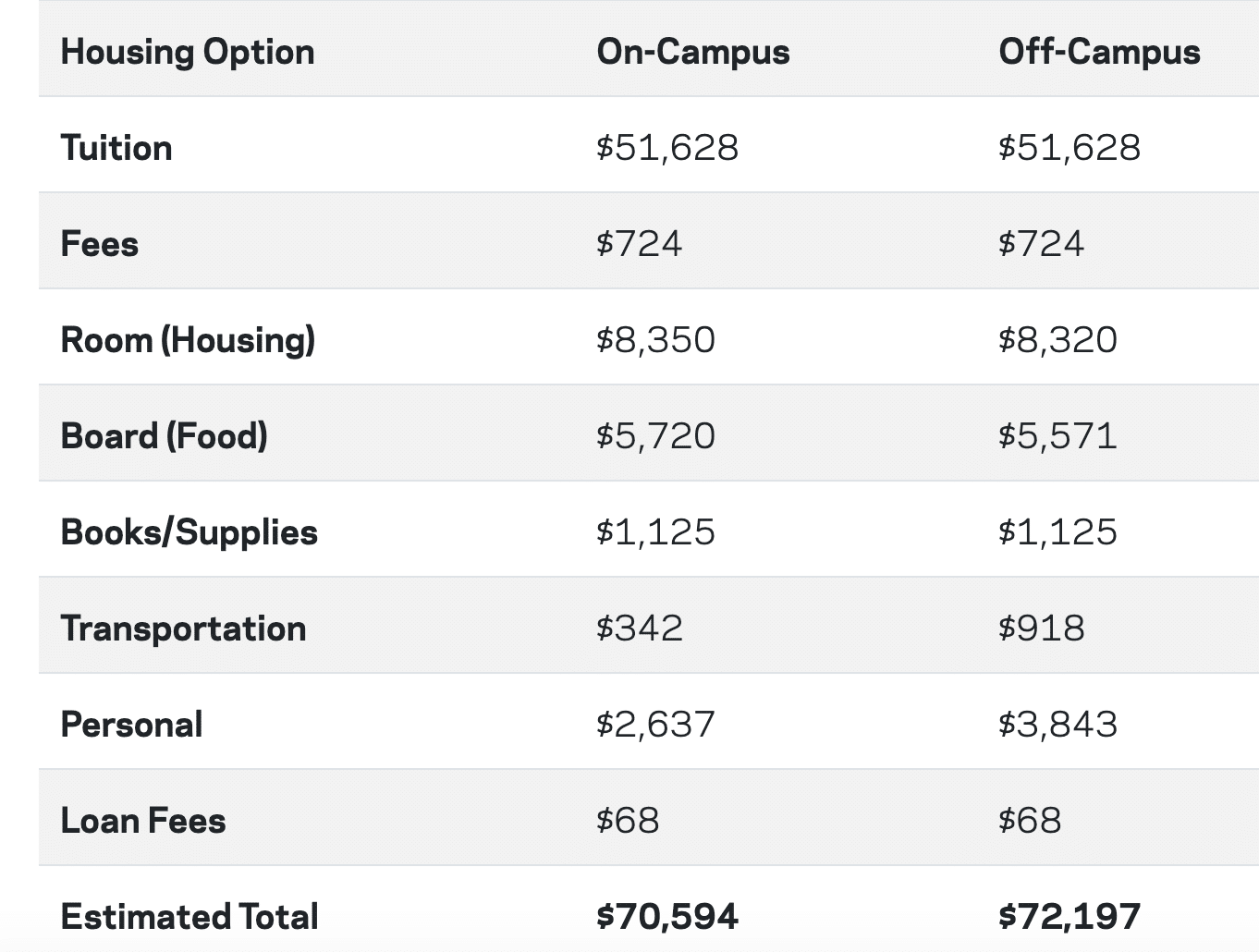
If you want to make sure that your educational investment pays off, consider a skills-based, in-demand profession, like working as a dental hygienist.
Dental hygienists help clean patients’ teeth, take X-rays, and promote overall oral health. They play an important role in public health and are the backbone of dental offices. According to the American Dental Hygienists' Association (ADHA), dental hygienists must graduate from an accredited dental hygiene program and pass a written board exam, plus a clinic exam, before they receive their hygienist license.
According to the Bureau of Labor Statistics (BLS), the median pay as of 2020 for dental hygienists is $77,090 annually. The BLS projects 11% job growth between 2020 to 2030, which it considers higher than average. Dentistry is a growing field, but you’ll want to be aware of dental hygienist school costs and how to pay for it before starting your journey.
Tuition costs for dental hygienists
If you’re curious about dental hygienist school costs, you’ll probably end up seeing a lot of varying prices. How much you end up paying for school depends on the following:
- Whether you attend a public or private school (private school is more expensive).
- Whether you go to an in-state or out-of-state school (in-state residents pay less).
- The level of dental hygiene education you’re pursuing (Associate, Bachelor’s, or Master’s degree program).
According to the American Dental Education Association (ADEA), the average tuition costs and fees for in-state dental hygiene schools are:
- $22,692 for an Associate degree
- $36,382 for a Bachelor’s degree
- $30,421 for a Master’s degree
Public vs. private dental hygienist costs
In-state tuition is always more affordable for state residents than out-of-state tuition for non-residents. For example, Foothill College offers a Bachelor of Science (B.S.) in dental hygiene if you’re already a licensed hygienist who has completed a two-year program at a community college and taken dental hygiene courses.
The California-based school estimates its program costs at $4,000. If you’re a non-resident, that number more than doubles to $9,700. Unfortunately, close to doubling the tuition amount can be fairly standard if you’re not a resident and considered an out-of-state student.
Additionally, there’s a major cost difference if you go to a public school versus a private school. Private schools tend to be more expensive. For example, the University of the Pacific is a private college with campuses in Northern California. It offers a B.S. in Dental Hygiene with tuition priced at $51,628 per academic year — considerably higher than other programs at public institutions.
Though its website notes that 89% of students receive an average of $27,929 in financial aid each year, it’s still a notable amount to consider. Might be able to score more financial aid assistance at a private school, but still end up paying more overall.
Your private school connections and education might make the opportunity worth it, but remember that dental hygiene is a skills-based profession. In the long run, attending an affordable school might not affect your advancement in this career, and could save you a lot of money.
Get Started With Our New IDR Calculator

Dental hygienist school expenses
When it comes to the cost of dental hygienist school, there’s so much more to consider than simply tuition costs. There’s also room and board, books, educational equipment and technology, transportation and more.
Let’s take a look at an example from the University of the Pacific. Though the cost of attendance table isn’t specific to dental hygienists, it offers a snapshot of total costs for full-time undergraduate students who live on or off-campus.
Part-time students might have lower costs up front. However, they pay more over time, depending on how long it takes to complete general education courses, prerequisite courses, and dental assistant coursework.

Source/credit: University of the Pacific
As you can see room and board adds $13,000 alone, not including the hundreds of dollars needed for transportation costs, and potentially thousands more for books and personal items.
Obviously, these amounts vary depending on the hygienist programs you’re considering, where you live, and your living and transportation needs, as well as your overall lifestyle. Review the total costs of the dental programs you’re considering so you’re not caught off-guard.
How to pay for dental hygienist school
Dental hygienist school costs vary depending on if you choose the Associate degree, Bachelor’s degree or Master’s route. You might be able to lower your costs by opting for an Associate degree. Even so, tuition costs and fees can be prohibitive.
To pay for dental hygienist school, here are some options.
Use your savings
This isn’t an option for everyone, but if you have cash savings to put toward paying for dental hygienist school, it’s a good way to minimize student loan debt. Weigh the pros and cons of using that cash now for school, rather than having it available for emergencies or other expenses.
Consider reserving a minimum of three to six months worth of expenses toward an emergency fund. This way you won’t rely on credit card debt when unexpected expenses arise.
Apply for grants and scholarships
You can also apply for grants and scholarships, which don’t have to be repaid. If you qualify, these are great options to reduce education expenses.
To qualify for federal grants, you typically need to demonstrate financial need as part of the eligibility requirements. You can look for scholarships through your school, city, and through organizations you may be a part of.
Take out federal student loans
In an ideal world, you could pay for tuition costs with your own money, grants, and scholarships. Unfortunately, that’s not the case for most people. To help pay for dental hygienist school costs, you may need to take out federal student loans.
Submit your Free Application for Federal Student Aid (FAFSA®) to see which types of financial aid you qualify for.
Federal loans offer many benefits for borrowers including different repayment options, lower payments through income-driven repayment, deferment or forbearance, as well as student loan forgiveness.
Private loans as a last resort
Private loans from banks and other financial institutions should be considered as a last resort when paying for dental hygienist school. Make sure you take advantage of all other types of federal financial aid, first.
Private student loan repayment terms are much less flexible than federal loans, and there are no forgiveness options. If you need to take out private loans, compare multiple private student lenders, including the interest rate, repayment options, and the total cost of the loan that’s offered. If they require a cosigner, also see if the lender has a cosigner release feature.
The bottom line
Dental hygienist school costs can be worth the expense and time if you have a passion for dental health and want a profession that’s primed for growth at a decent entry-level salary.
If you’re wondering if you should take on student debt to pursue your dental hygienist education, get in touch with us for a pre-debt consult. We help you review all of your options and forge a clear path ahead, so you’re not left in the dark. Book a session with us today.
